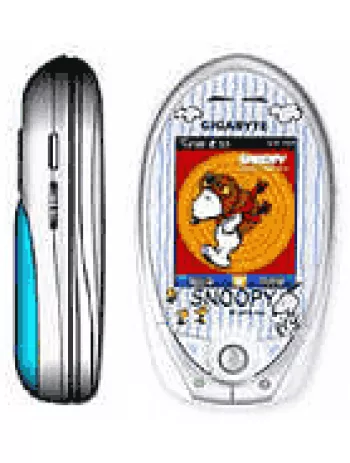
Introduction to the Gigabyte GSmart q60
The Gigabyte GSmart q60, announced in February 2007, was an ambitious attempt to create a hybrid device combining the features of a PDA with those of a smartphone. Despite being ultimately cancelled before its market release, the GSmart q60 remains an interesting study in early smartphone design and functionality. This article will explore its features and specifications in depth.
Network and Connectivity
The GSmart q60 was designed to support GSM and HSPA technologies, making it compatible with 2G and 3G networks, specifically GSM 900, 1800, 1900 for 2G and HSDPA 2100 for 3G. These capabilities meant that the device aimed to provide decent connectivity speeds for its time through HSPA. However, it lacked modern connectivity features such as WLAN, GPS, and a radio, which are considered standard in today's smartphones.
Design and Body
In terms of design, the GSmart q60 sported a sleek form factor, measuring 111 x 64 x 14 mm. It was equipped with a QWERTY keyboard, offering users a tactile typing experience reminiscent of PDAs. The device was built to be a robust mobile communication tool, utilizing a Mini-SIM for its network connectivity. Despite its promising design, detailed weight information is not available, though it would likely have been relatively light given its dimensions and category.
Display Characteristics
The GSmart q60 featured a 2.5-inch TFT resistive touchscreen capable of displaying 256K colors, although effectively supporting 65K colors. Its resolution stood at 320 x 240 pixels, which was typical for devices of its era, providing a satisfactory display size for basic multimedia and productivity applications. The screen-to-body ratio was approximately 27.2%, a standard of the time period for QWERTY-equipped devices.
Operating System and Processing Power
Powered by Microsoft Windows Mobile 6 Professional, the GSmart q60 was part of the early wave of smartphones attempting to blend phone features with the powerful capabilities of a desktop environment. The device was driven by an Intel XScale PXA270 520MHz processor, which provided enough computational power for productivity software, email, and basic gaming but would be considered underpowered by today's standards.
Memory and Storage
Internally, the GSmart q60 came equipped with 96MB of RAM and 256MB of ROM, offering limited space for application and data storage compared to modern smartphones. However, it supported a microSD card slot, enabling users to expand storage capacity as needed, relieving some constraints inherent in its onboard storage.
Camera Capabilities
The device featured a 2 MP rear camera, complete with autofocus and an LED flash, which was an innovative feature for enhancing photo quality in low-light situations at the time. Additionally, a VGA camera on the front allowed for video calls, showcasing the device's multifaceted approach to communication well before video calling was commonplace. Video capture was also supported, although specifics on resolution and frame rate are limited.
Audio and Sound Features
For sound, the GSmart q60 did not include a loudspeaker. Instead, it relied on downloadable polyphonic, MP3, and MIDI ringtones for audio alerts and notifications. The lack of a 3.5mm audio jack was a notable omission, requiring users to adapt to other audio output methods, likely through the miniUSB 2.0 port.
Communication and Other Features
Without WLAN or GPS functionality, the GSmart q60 was focused on wired and basic wireless communication through Bluetooth 2.0 and miniUSB 2.0. Although these communication features were somewhat basic, they reflected the transitional period of smartphone technological capabilities during its development.
Battery and Power Management
The device was powered by a removable Li-Ion battery, a common choice at the time for its decent power-to-weight ratio and ease of replacement. Battery life specifications remain unspecified, but users could anticipate an average standby and talk time based on its competitors.
Conclusion: Legacy of the Gigabyte GSmart q60
Although the Gigabyte GSmart q60 never made it to the consumer market, it represents a key moment in the evolution of mobile technology. Its mix of PDA and phone characteristics foreshadowed the multi-functional smartphones we use today. While its capabilities may seem limited now, the GSmart q60's ambition provides an important glimpse into the aspirations and potential of technology designers in the mid-2000s. The device’s cancellation possibly stemmed from strategic shifts or an evolving market, but its comprehensive feature set still serves as an intriguing benchmark in mobile innovation history.
Main Features of Gigabyte GSmart q60
- Technology: Supports GSM / HSPA
- Keyboard: QWERTY for easy typing
- Display: 2.5-inch TFT resistive touchscreen with 256K colors
- Processor: Intel XScale PXA270 520MHz
- Operating System: Microsoft Windows Mobile 6 Professional
- Memory: 96MB RAM, 256MB ROM with microSD support
- Camera: 2 MP main camera with autofocus and LED flash
- Front Camera: VGA videocall camera
- Connectivity: Bluetooth 2.0 and miniUSB 2.0
- Color: Available in Silver
Disadvantages of Gigabyte GSmart q60
- Cancelled status; not available for purchase.
- Limited 2G and 3G network bands; lacks modern 4G and 5G support.
- Small screen size with low screen-to-body ratio (~27.2%).
- Resistive touchscreen technology; less responsive compared to capacitive touchscreens.
- Low display resolution (320 x 240 pixels, ~160 ppi density).
- Outdated operating system (Microsoft Windows Mobile 6 Professional).
- Insufficient internal memory (96MB RAM, 256MB ROM).
- Main camera only 2 MP; low resolution compared to modern standards.
- Lack of loudspeaker and 3.5mm headphone jack.
- No WLAN, radio, or positioning (GPS) features.
- Limited Bluetooth version 2.0 support.
- Only offers miniUSB 2.0 connectivity.

View Also
More Phones
All Rights Reserved +13665 Phones © Mobilawy 2025

























